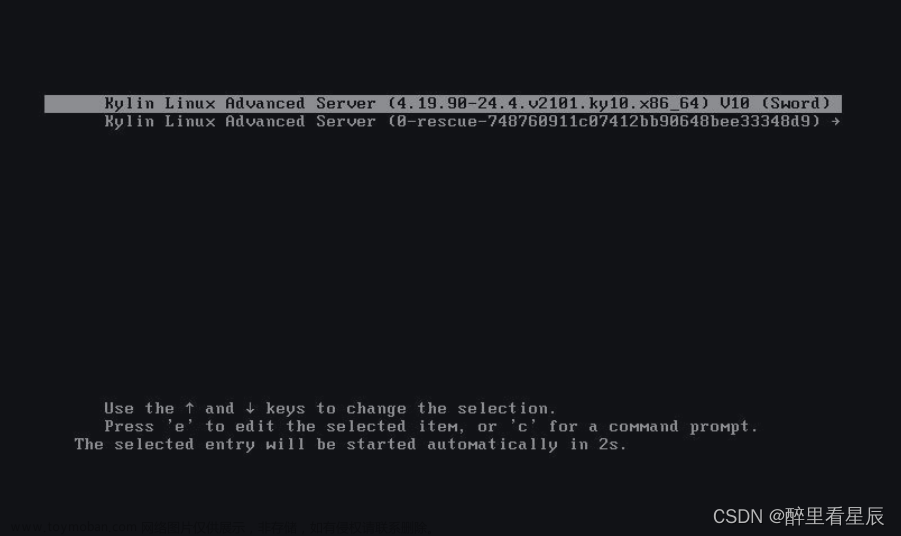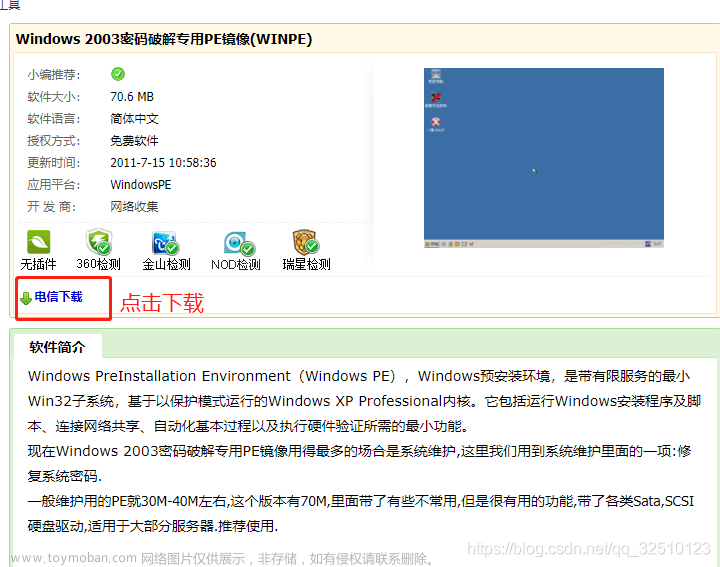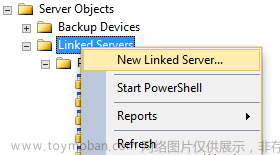在日常工作和学习中,服务器常为 Linux 服务器,而主机电脑一版为 Windows 系统,在主机上如何连接 Linux 服务器,大家用到的工具也是五花八门,很多朋友都喜欢用 XShell,而我习惯用 SecureCRT。
可当有时候,工具中链接服务器的链接信息,忘记了用户对应的密码,而且手头还没有保存明文密码,这就比较尴尬了。那如何找回密码呢?这篇简单说说找回步骤。
第一步:找到 SecureCRT 保存链接信息的配置文件。
在工具菜单栏,依次点击 Options -> Global Options...,打开选项面板,找到如图所示位置。

在对应路径找到机器对应的配置文件,比如这里要找回 192.168.220.10 机器的链接密码,如图:

打开配置文件后,可以看到用户名和密码信息等,如图:

第二步:新建一个 Python 脚本,代码如下:
#!/usr/bin/env python3
import os
from Crypto.Hash import SHA256
from Crypto.Cipher import AES, Blowfish
class SecureCRTCrypto:
def __init__(self):
'''
Initialize SecureCRTCrypto object.
'''
self.IV = b'\x00' * Blowfish.block_size
self.Key1 = b'\x24\xA6\x3D\xDE\x5B\xD3\xB3\x82\x9C\x7E\x06\xF4\x08\x16\xAA\x07'
self.Key2 = b'\x5F\xB0\x45\xA2\x94\x17\xD9\x16\xC6\xC6\xA2\xFF\x06\x41\x82\xB7'
def Encrypt(self, Plaintext : str):
'''
Encrypt plaintext and return corresponding ciphertext.
Args:
Plaintext: A string that will be encrypted.
Returns:
Hexlified ciphertext string.
'''
plain_bytes = Plaintext.encode('utf-16-le')
plain_bytes += b'\x00\x00'
padded_plain_bytes = plain_bytes + os.urandom(Blowfish.block_size - len(plain_bytes) % Blowfish.block_size)
cipher1 = Blowfish.new(self.Key1, Blowfish.MODE_CBC, iv = self.IV)
cipher2 = Blowfish.new(self.Key2, Blowfish.MODE_CBC, iv = self.IV)
return cipher1.encrypt(os.urandom(4) + cipher2.encrypt(padded_plain_bytes) + os.urandom(4)).hex()
def Decrypt(self, Ciphertext : str):
'''
Decrypt ciphertext and return corresponding plaintext.
Args:
Ciphertext: A hex string that will be decrypted.
Returns:
Plaintext string.
'''
cipher1 = Blowfish.new(self.Key1, Blowfish.MODE_CBC, iv = self.IV)
cipher2 = Blowfish.new(self.Key2, Blowfish.MODE_CBC, iv = self.IV)
ciphered_bytes = bytes.fromhex(Ciphertext)
if len(ciphered_bytes) <= 8:
raise ValueError('Invalid Ciphertext.')
padded_plain_bytes = cipher2.decrypt(cipher1.decrypt(ciphered_bytes)[4:-4])
i = 0
for i in range(0, len(padded_plain_bytes), 2):
if padded_plain_bytes[i] == 0 and padded_plain_bytes[i + 1] == 0:
break
plain_bytes = padded_plain_bytes[0:i]
try:
return plain_bytes.decode('utf-16-le')
except UnicodeDecodeError:
raise(ValueError('Invalid Ciphertext.'))
class SecureCRTCryptoV2:
def __init__(self, ConfigPassphrase : str = ''):
'''
Initialize SecureCRTCryptoV2 object.
Args:
ConfigPassphrase: The config passphrase that SecureCRT uses. Leave it empty if config passphrase is not set.
'''
self.IV = b'\x00' * AES.block_size
self.Key = SHA256.new(ConfigPassphrase.encode('utf-8')).digest()
def Encrypt(self, Plaintext : str):
'''
Encrypt plaintext and return corresponding ciphertext.
Args:
Plaintext: A string that will be encrypted.
Returns:
Hexlified ciphertext string.
'''
plain_bytes = Plaintext.encode('utf-8')
if len(plain_bytes) > 0xffffffff:
raise OverflowError('Plaintext is too long.')
plain_bytes = \
len(plain_bytes).to_bytes(4, 'little') + \
plain_bytes + \
SHA256.new(plain_bytes).digest()
padded_plain_bytes = \
plain_bytes + \
os.urandom(AES.block_size - len(plain_bytes) % AES.block_size)
cipher = AES.new(self.Key, AES.MODE_CBC, iv = self.IV)
return cipher.encrypt(padded_plain_bytes).hex()
def Decrypt(self, Ciphertext : str):
'''
Decrypt ciphertext and return corresponding plaintext.
Args:
Ciphertext: A hex string that will be decrypted.
Returns:
Plaintext string.
'''
cipher = AES.new(self.Key, AES.MODE_CBC, iv = self.IV)
padded_plain_bytes = cipher.decrypt(bytes.fromhex(Ciphertext))
plain_bytes_length = int.from_bytes(padded_plain_bytes[0:4], 'little')
plain_bytes = padded_plain_bytes[4:4 + plain_bytes_length]
if len(plain_bytes) != plain_bytes_length:
raise ValueError('Invalid Ciphertext.')
plain_bytes_digest = padded_plain_bytes[4 + plain_bytes_length:4 + plain_bytes_length + SHA256.digest_size]
if len(plain_bytes_digest) != SHA256.digest_size:
raise ValueError('Invalid Ciphertext.')
if SHA256.new(plain_bytes).digest() != plain_bytes_digest:
raise ValueError('Invalid Ciphertext.')
return plain_bytes.decode('utf-8')
if __name__ == '__main__':
import sys
def Help():
print('Usage:')
print(' SecureCRTCipher.py <enc|dec> [-v2] [-p ConfigPassphrase] <plaintext|ciphertext>')
print('')
print(' <enc|dec> "enc" for encryption, "dec" for decryption.')
print(' This parameter must be specified.')
print('')
print(' [-v2] Encrypt/Decrypt with "Password V2" algorithm.')
print(' This parameter is optional.')
print('')
print(' [-p ConfigPassphrase] The config passphrase that SecureCRT uses.')
print(' This parameter is optional.')
print('')
print(' <plaintext|ciphertext> Plaintext string or ciphertext string.')
print(' NOTICE: Ciphertext string must be a hex string.')
print(' This parameter must be specified.')
print('')
def EncryptionRoutine(UseV2 : bool, ConfigPassphrase : str, Plaintext : str):
try:
if UseV2:
print(SecureCRTCryptoV2(ConfigPassphrase).Encrypt(Plaintext))
else:
print(SecureCRTCrypto().Encrypt(Plaintext))
return True
except:
print('Error: Failed to encrypt.')
return False
def DecryptionRoutine(UseV2 : bool, ConfigPassphrase : str, Ciphertext : str):
try:
if UseV2:
print(SecureCRTCryptoV2(ConfigPassphrase).Decrypt(Ciphertext))
else:
print(SecureCRTCrypto().Decrypt(Ciphertext))
return True
except:
print('Error: Failed to decrypt.')
return False
def Main(argc : int, argv : list):
if 3 <= argc and argc <= 6:
bUseV2 = False
ConfigPassphrase = ''
if argv[1].lower() == 'enc':
bEncrypt = True
elif argv[1].lower() == 'dec':
bEncrypt = False
else:
Help()
return -1
i = 2
while i < argc - 1:
if argv[i].lower() == '-v2':
bUseV2 = True
i += 1
elif argv[i].lower() == '-p' and i + 1 < argc - 1:
ConfigPassphrase = argv[i + 1]
i += 2
else:
Help()
return -1
if bUseV2 == False and len(ConfigPassphrase) != 0:
print('Error: ConfigPassphrase is not supported if "-v2" is not specified')
return -1
if bEncrypt:
return 0 if EncryptionRoutine(bUseV2, ConfigPassphrase, argv[-1]) else -1
else:
return 0 if DecryptionRoutine(bUseV2, ConfigPassphrase, argv[-1]) else -1
else:
Help()
exit(Main(len(sys.argv), sys.argv))文件名随便自定义,比如 SecureCRTCipher.py。
第三步:主机搭建 Python3 环境。
由于脚本为 Python 脚本,需要 Python 环境才能执行,需要在 Windows 主机上安装 Python3 环境。该步骤此处省略,请自行安装并配置环境变量等。
另外注意,需要安装模块 pycryptodome,否则在第四步执行命令时,会报如下错误:
Traceback (most recent call last):
File "SecureCRTCipher.py", line 3, in <module>
from Crypto.Hash import SHA256
ModuleNotFoundError: No module named 'Crypto'
安装模块命令:pip install pycryptodome
第四步:执行脚本,找回密码。
打开 CMD 窗口,进入脚本存放目录位置,如图:

SecureCRT 的版本不同,加密格式有两种。
格式一:
S:"Password V2"=02:30d93758e1ea303c18235301266dc93a5d69070b40668251a2c75de132a5a034b018dab1a172bd73da69151d6fd4099824f2a4fb5f57c5f854e9a9012ff0e6c1
执行命令:python SecureCRTCipher.py dec -v2 30d93758e1ea303c18235301266dc93a5d69070b40668251a2c75de132a5a034b018dab1a172bd73da69151d6fd4099824f2a4fb5f57c5f854e9a9012ff0e6c1
注意:-V2 参数后的值,是格式一中【=】后面的值,并且去掉【02:】。
执行后,可以看到明文密码已经输出到终端中了,如图:

格式二:
S:"Password"=uc71bd1c86f3b804e42432f53247c50d9287f410c7e59166969acab69daa6eaadbe15c0c54c0e076e945a6d82f9e13df2
执行命令:python SecureCRTCipher.py dec c71bd1c86f3b804e42432f53247c50d9287f410c7e59166969acab69daa6eaadbe15c0c54c0e076e945a6d82f9e13df2
注意:dec 后的值,是格式二中【=】后面的值,并且去掉【u】。
执行后,可以看到明文密码已经输出到终端中了,如图:
 文章来源:https://www.toymoban.com/news/detail-467454.html
文章来源:https://www.toymoban.com/news/detail-467454.html
Good Luck!文章来源地址https://www.toymoban.com/news/detail-467454.html
到了这里,关于SecureCRT 服务器链接信息密码忘记找回的文章就介绍完了。如果您还想了解更多内容,请在右上角搜索TOY模板网以前的文章或继续浏览下面的相关文章,希望大家以后多多支持TOY模板网!













